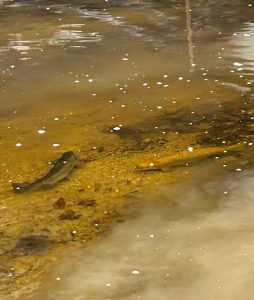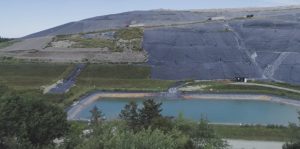by Maria Girouard
(Penobscot Tribal Historian and
Co-founder of Sunlight Media Collective).
Penobscot people have long been steadfast stewards of the fisheries within their homelands. At times this stewardship has involved defending, fighting and protecting the “resources,” the ancient relatives, from degradation and harm. Other times stewardship is nurturing, supporting and life affirming as it was at high noon on Friday November 8, 2024.

Deep in the forest of Penobscot territory, Penobscot Nation Department of Natural Resources staff and supporters gathered to assist their federal partners, the U.S. Fish and Wildlife Service, in stocking several dozen adult Atlantic Salmon into Penobscot ancestral waterways. The Salmon made the trek by tanker truck from the Green Lake National Fish Hatchery. Upon arrival Catherine Johnston, Assistant Project Leader (USFWS) checked oxygen levels in the tanks and monitored temperatures while educating every step of the way. The sky was overcast and promising rain.
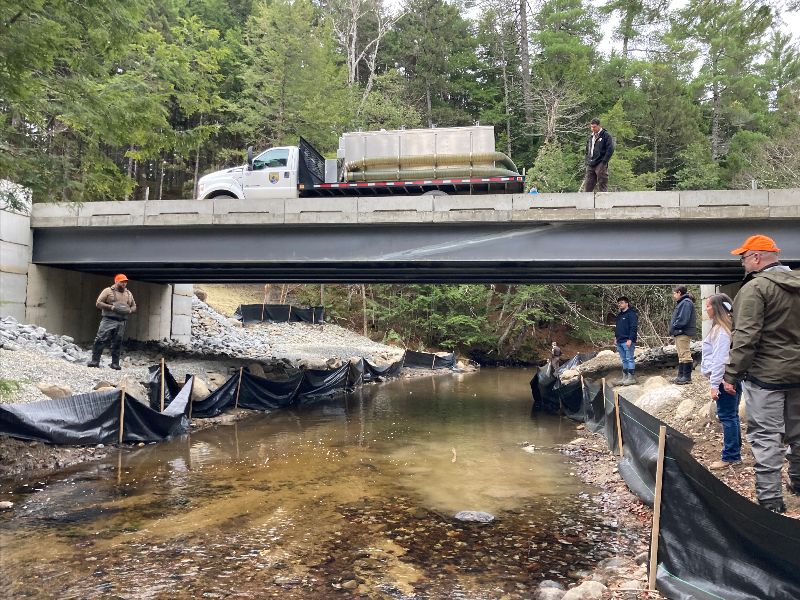
November 8, 2024. Photos by Meredith DeFrancesco/Sunlight Media Collective.



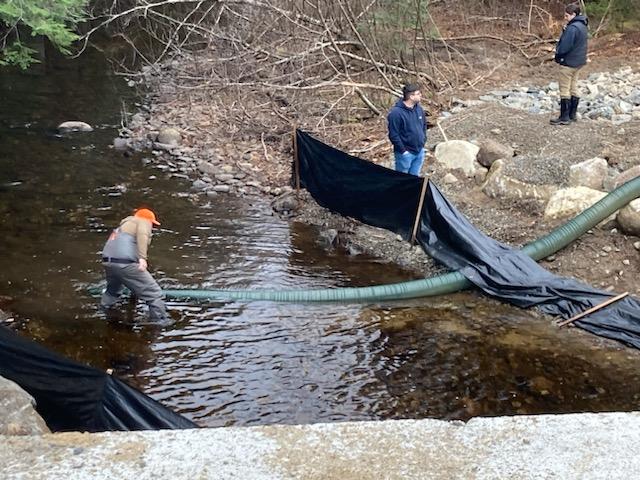
Salmon has been an important and significant fish in Wabanakik since time immemorial.
The mention of Salmon appears early and often in historical records. Just downriver from Indian Island (Penobscot Nation) is Salmon Rock. Oral histories recount tales of being able to walk across the river on backs of fish they were so plentiful; and one only had to know when to arrive at the falls to catch and prepare enough fish to feed their families an entire year. This site of Penobscot’s esteemed fishery was destroyed by the dam at Old Town Falls in 1797.
In 1739, in association with the first documented dam protest in Wabanakik Tribal Chief Loron first presented the idea of a fishway. He traveled to Boston, the seat of colonial government at the time, to meet with Colonial Governor William Belcher. Chief Loron began by laying an otter skin before the Governor and said “I wish to speak to you about the river to which I belong.” He described how the dam built by colonists on the Presumpscot River was starving the people upriver. He insisted that a passage be made on the dam so the Salmon could pass. One historical account described the damage caused by the Presumpscot dam – “an acre of fish, mostly salmon” congregated below the impassable dam and died. A passage in the dam would help fish surmount the barrier and access their ancestral spawning grounds. The Presumpscot dam conflict has been described as a battle over Salmon. Many tribes still acknowledge and maintain ancient contracts to protect the Salmon.
“Before the time of written laws there were laws written into the land.”
(Covenant of the Salmon People, documentary*).
*Covenant of the Salmon People is a 60-minute documentary that portrays the Nez Perce Tribe as they continue to carry out their ancient promise to protect Chinook Salmon, cornerstone species and first food. http://covenantofthesalmonpeople.com
Video by Maria Girouard & Meredith DeFrancesco/Sunlight Media Collective.
On Friday as Salmon was transferred from the tanker truck into the stream, a smudge of sage and cedar was lit to welcome them to the wild, their ancestral spawning grounds. Department of Natural Resources Director Chuck Loring had boots in the stream ensuring safe passage of the Salmon from truck to stream. After the truck was emptied, the Salmon were monitored for a period of time. Conversations in hushed tones along the stream bank were about Salmon characteristics, habits and ideal habitats. Sixteen-year old Penobscot student Nora Sappier attended the stocking opportunity and helped monitor. She said she hoped to work for the Department of Natural Resources someday.
The Salmon were kept company as they got used to their new surroundings. Some Salmon were observed orienting themselves at the bottom of the stream with noses pointed upstream, like Salmon do. Settling in. As the crew left the stocking site with best wishes for the Salmon, the skies opened up and a steady rain began to fall.
“The lands we possess have been given to us by the Master of Life.”
– Chief Loron, representing the fisheries and the Indigenous people of Wabanakik.
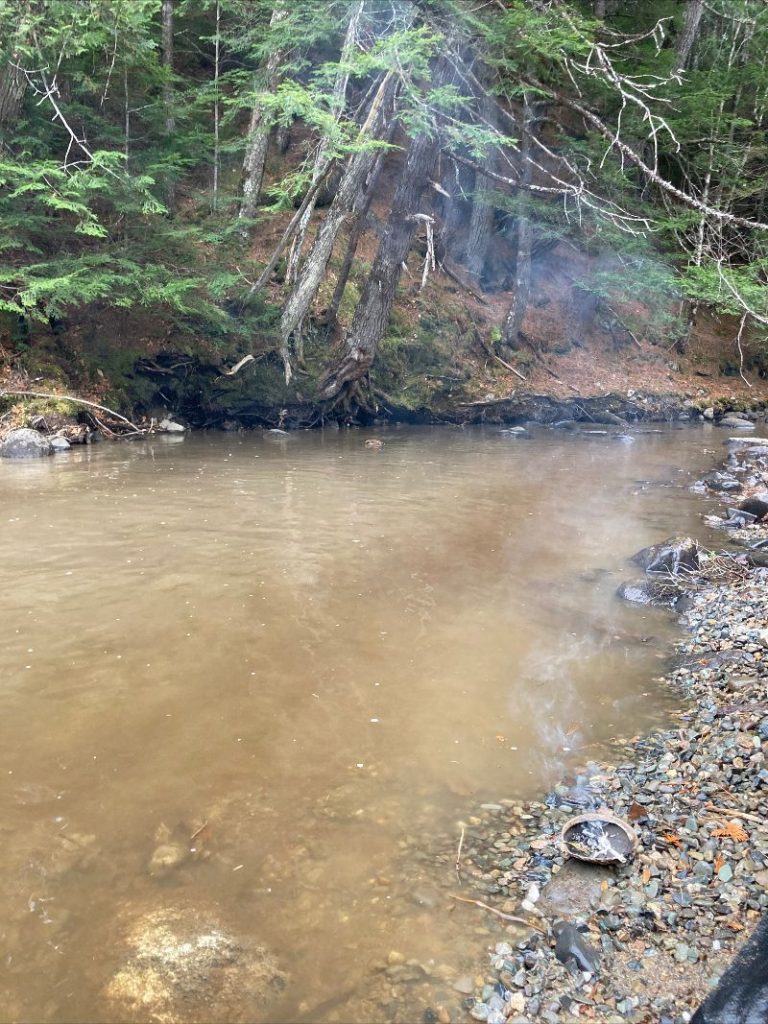
November 8, 2024. Photo by Meredith DeFrancesco/Sunlight Media Collective.





